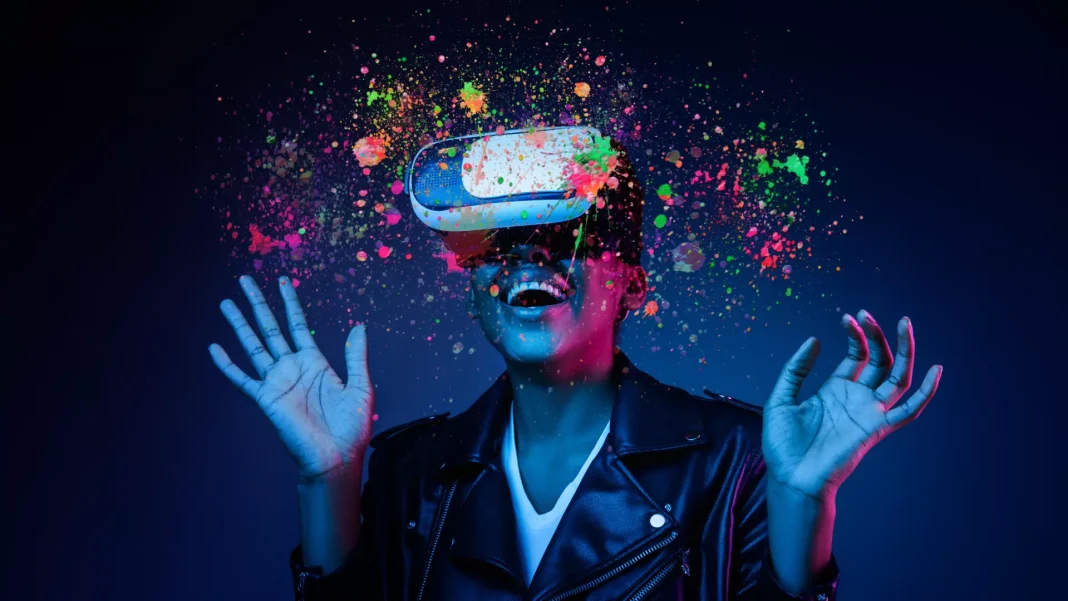In an era marked by rapid technological innovation, the fusion of art with virtual reality (VR) has become a burgeoning frontier that is transforming the creative landscape. This amalgamation has expanded the boundaries of how art is created, experienced, and interpreted. Virtual reality, once a far-fetched science fiction concept, is now a tangible tool in the artist’s palette, offering immersive experiences that transcend traditional canvases and galleries.
The Evolution of Artistic Expression
Art has long been a reflection of human experience and imagination. From the earliest cave paintings to the sophisticated digital media of today, the evolution of art parallels the evolution of society. With each technological advancement, artists have found new mediums to explore. Virtual reality is the latest medium to offer artists unprecedented ways to harness their creativity and communicate their vision.
Virtual Reality as a Canvas
Virtual reality provides a limitless canvas where the only boundary is the artist’s imagination. In VR, artists are no longer confined to two dimensions. They can create and manipulate space itself, inviting viewers to step into worlds born from their most intricate dreams or wildest abstractions. This three-dimensional art form creates a sense of presence and immersion that traditional art mediums cannot replicate.
The Experience of Immersion
The immersive nature of VR art creates a direct, personal interaction between the artwork and the observer. Unlike viewing a painting on a museum wall, VR allows individuals to enter and explore the art from the inside, providing a sensory experience that can evoke a powerful emotional response. This level of engagement is reshaping the relationship between art and audience, making the viewer an active participant in the artistic narrative.
The Democratization of Art through VR
Virtual reality is also democratizing art, making it more accessible to a wider audience. VR exhibitions can be experienced by anyone with a headset, regardless of geographic location, removing the barriers of physical gallery spaces. This accessibility not only broadens the audience for artists but also provides an inclusive platform for viewers who may have physical limitations that prevent them from visiting traditional art venues.
Education and Collaboration
The educational potential of VR in the art world is vast. Art schools and institutions are beginning to incorporate VR into their curriculums, providing students with new ways to create and learn about art. Moreover, VR facilitates collaboration among artists separated by distances, allowing them to co-create in a shared virtual space, blending styles, cultures, and disciplines to produce new and innovative art forms.
The Challenge of Technology
With every new medium, there are challenges to overcome. VR technology is still in its nascent stages and can be cost-prohibitive for some artists and institutions. Additionally, there is a learning curve associated with mastering the software and hardware to create VR art. Artists and viewers alike must also navigate the physicality of VR, such as the potential for motion sickness and the need for space to explore virtual environments.
Ethical and Philosophical Considerations
As art in VR blurs the lines between reality and simulation, it also raises ethical and philosophical questions. What does it mean for an experience to be real? How does interacting with art in a virtual space change our perception of authenticity and value? These questions are just beginning to be explored as the medium matures.
Looking Ahead: The Future of Art and VR
The potential for VR in art is boundless. As technology advances, we can expect VR art to become more nuanced and sophisticated. In the future, we may see VR used to preserve and recreate historical artworks and cultural heritage sites, offering a form of digital preservation and time travel.
Conclusion
The intersection of art and virtual reality is more than a novelty; it is a testament to the enduring human drive to innovate and express ourselves in new ways. By expanding the horizons of what is possible, VR technology is not only changing the way art is made and experienced but also how it is valued and understood. As we continue to explore this exciting frontier, one thing is certain: the world of art will never be the same.

